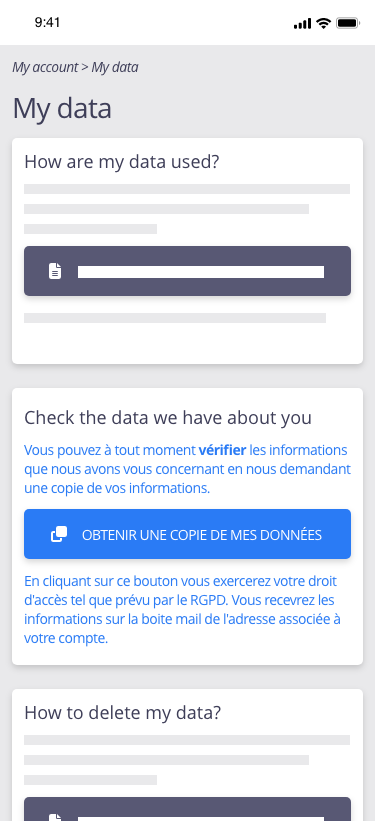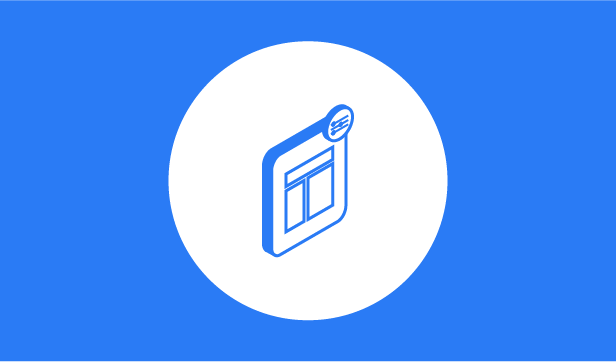Combining information and action
This design pattern is part of the LINC’s research initiative focusing on interface design. It comes from frequent proposals made by participants of the Data & Design workshops to implement the principle of transparency provided in the GDPR. It can be used and adapted to the specific context of your services and products. However, its reuse as such do not guarantee compliance with the GDPR in general and the principle of transparency in particular.
This pattern proposes to directly associate information about personal data and the related mean of action available, such as exercising a right or setting a feature.
This approach, which brings together information and action, makes it easier for people to control their data by making the ins and outs of an action directly visible. It avoids the separation between information on the one hand and action on the other, which would force the person to navigate between several pages of the service in order to be able to control their data.
Using the pattern in the user journey
► When signing-up: this pattern can be used when registering for a service, particularly in an onboarding. During this process, screens dealing with certain aspects of the processing (e.g. use of geolocation) can be proposed and provide a first level of information, coupled with a means of expressing a preference (e.g. authorisation or not to use the data for the specified purpose).
► In a privacy policy: this pattern is particularly relevant for privacy policies based on a purpose or data structure that can easily implement this pattern. For example, for an advertising targeting purpose detailed in the privacy policy, it would be possible to allow the individual to directly give or withdraw consent at that level.
► When using the service: combined with a notification, this pattern is particularly effective for people to set their preferences as suggested in the Instap case study.
► In case of a problem with the data or its use: in this type of situation, where the individual is likely to be uncomfortable with the way their data is being used, this pattern offers a clear, reassuring and effective way for them to regain control of their personal information.
► When setting one’s preferences: this pattern is particularly relevant where the individual seeks to actively choose how their data is processed, for example on a settings screen or a dahsboard.
Tips
► When using this pattern, it is relevant to indicate, in a neutral and objective way, the consequences of the person’s choice;
► Providing a link to further information to complement the first level of information provided with this pattern is desirable, and in some situations even mandatory;
► This pattern can be counterproductive if information made available is unclear. It could create some confusion or uncertainty for the person on the action they want to take or have already taken.
►This pattern may have its limits, becoming too heavy and dense, in cases where many actions are possible in relation to one aspect of the processing.
Examples
Attention point

Possible approach






